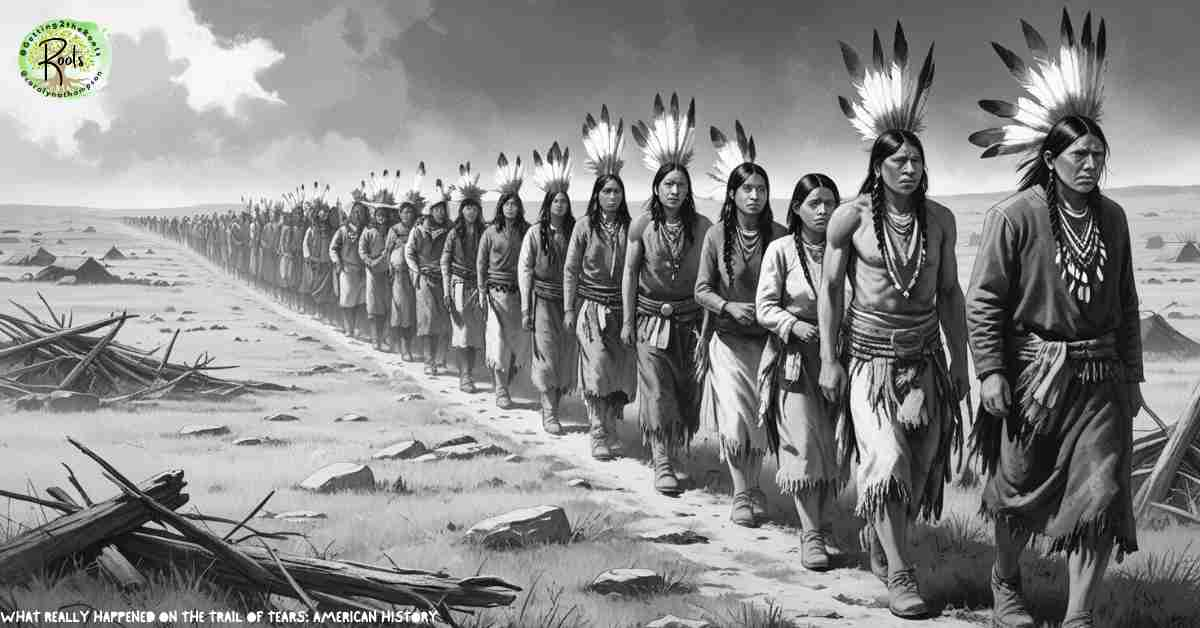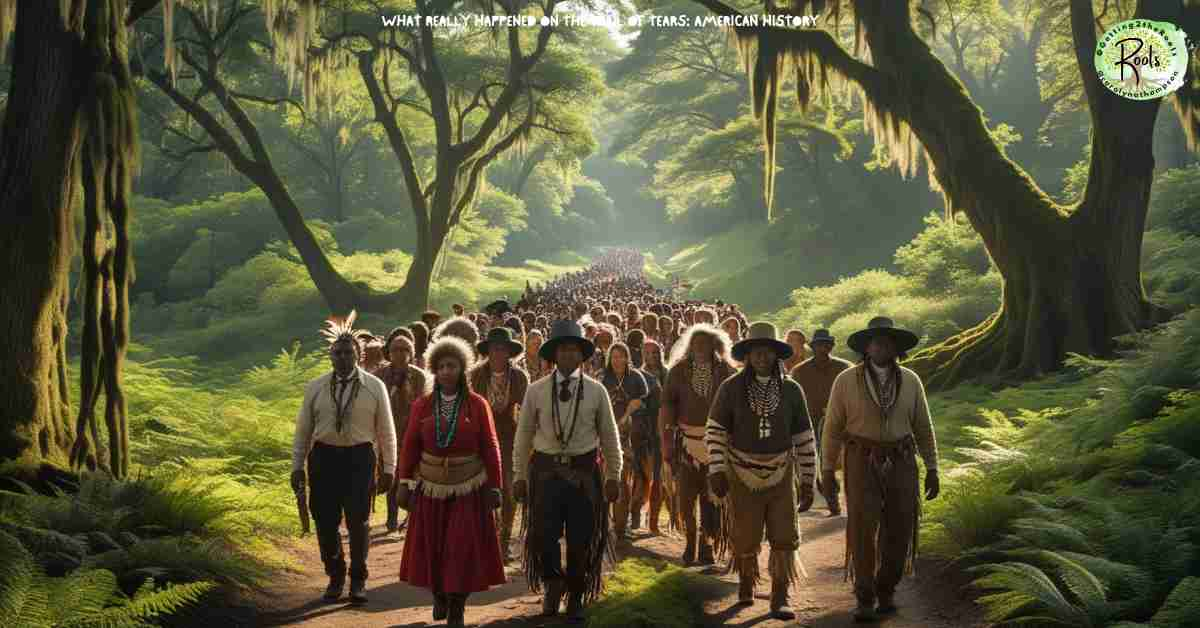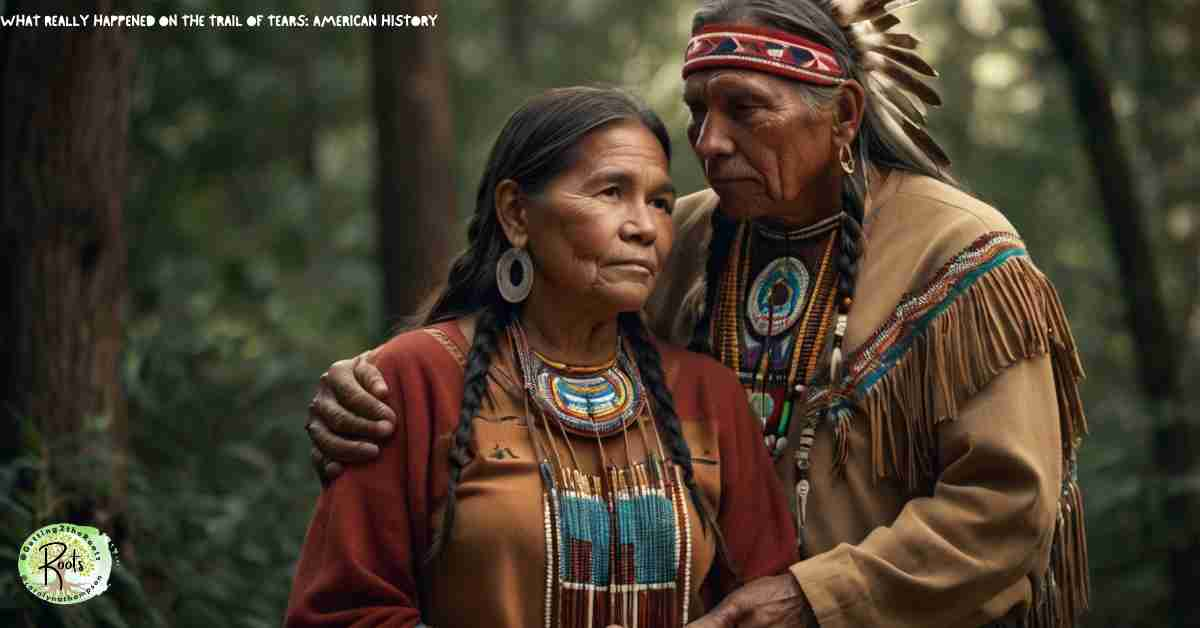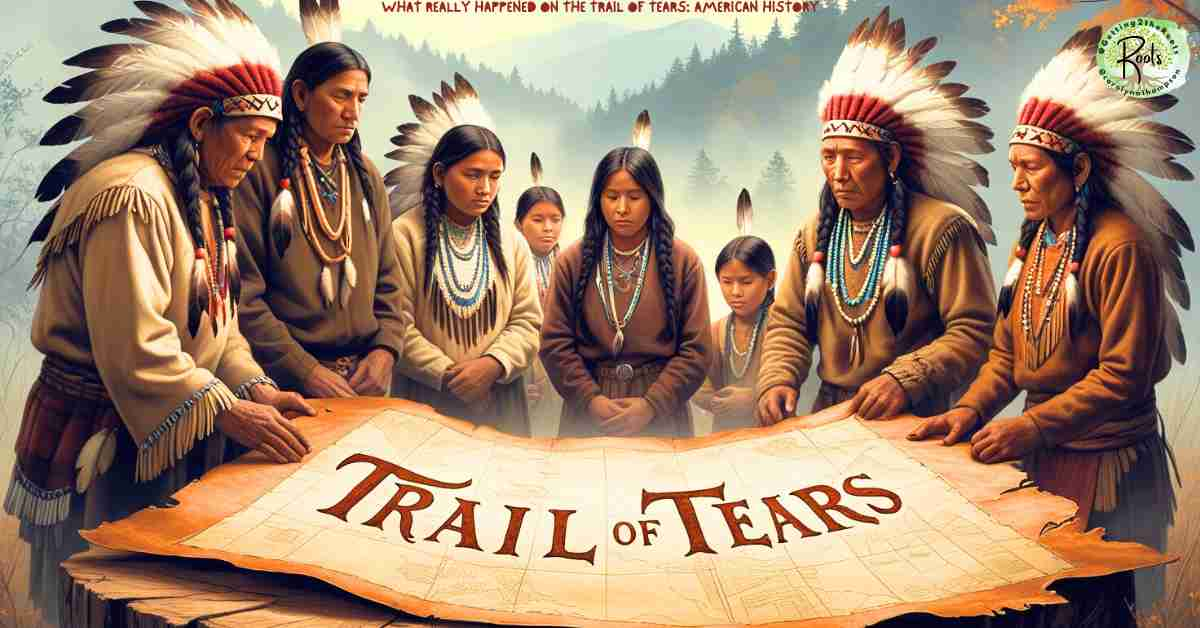The Trail of Tears remains one of the most painful chapters in American history. Learn how greed and injustice uprooted entire Native American communities.
This post explores the truth behind what really happened during this tragic time. From government decisions to brutal marches, you’ll discover the events that led to the forced removal of Native tribes from their land.
We’ll walk through the actions of U.S. leaders, the resistance of Native nations, the suffering endured along the journey, and the long-lasting impact on both Native and African American communities.
The Trail of Tears was more than a journey. It was a calculated plan to erase Native culture, steal land, and enforce control through suffering.
What began as pressure for land and power turned into mass displacement and death. Let’s begin by understanding who the Five Tribes were and how this tragedy took shape.
Who Were the Five Tribes? Trail of Tears Origins and Southeastern Nations
The Trail of Tears began with the forced removal of five powerful Native American tribes.
These were the Cherokee, Creek, Chickasaw, Choctaw, and Seminole. Each tribe lived in the southeastern United States for generations.
Organized Nations with Deep Roots
Unlike the false image often pushed by settlers, these tribes were not nomadic. Instead;
- They built structured governments,
- Created schools,
- And developed strong economies.
From Georgia to Florida, their lands became the center of their identities. As a result, these Native nations had farming systems, written languages, and political systems.
They passed down customs and protected their communities with pride. However, this progress didn’t protect them. It made their land even more desirable.
Settler Greed and Land Hunger
White settlers wanted the fertile soil. Cotton had become a booming crop, and southern land offered the perfect conditions.
Therefore, the tribes were seen as a barrier to wealth and expansion. Settlers viewed Native presence as a problem that needed solving.
To avoid conflict, many Native leaders tried to negotiate. Some adopted parts of European culture.
Others signed treaties to protect their land. Still, none of it worked. The tribes’ willingness to adapt only increased settler greed.
The Label “Five Civilized Tribes”
The U.S. government and white settlers gave the tribes a name: the Five Civilized Tribes. They used this label to praise those who adopted white customs.
But this label was unfair. It ignored the complexity and strength of other Native cultures. Across the continent, many tribes had their own advanced systems.
For example, the Iroquois Confederacy inspired parts of the U.S. Constitution. Pueblo communities built highly skilled agricultural villages long before European contact.
Eventually, despite their efforts, these five tribes faced removal. Hence, the Trail of Tears began when their homes, families, and nations were forced to move.
The Trail of Tears and Andrew Jackson’s Role in Forced Removal
The Trail of Tears resulted from harsh policies and growing settler greed. Although many Native tribes worked to protect their land, U.S. leaders had other plans. President Andrew Jackson made removal a goal soon after winning the election in 1828.
A Law That Opened the Door
Congress passed the Indian Removal Act in 1830. With Jackson’s full support, this law gave the government power to move tribes west of the Mississippi River.
On the surface, the law appeared fair. It claimed to allow voluntary treaties. In reality, many tribes faced threats and pressure.
Government agents promised rich land, food, and supplies in exchange for giving up their homes.
However, those promises rarely came true. Some tribal leaders signed just to protect their people from violence.
The Cherokee Took a Stand
While some tribes gave in, the Cherokee chose to fight back in court. Their legal battle reached the Supreme Court.
In 1832, the court ruled in favor of the Cherokee Nation. The justices agreed they had a right to stay on their land. Even with the ruling, Jackson refused to enforce it.
As a result, states like Georgia ignored the law and passed new rules to break Cherokee control. Soon, state militias began moving in. Settlers also rushed to claim land before removal began.
Pushed Toward the Brink
Over time, the situation grew worse. Tribal governments lost more power. Soldiers arrived in larger numbers.
Meanwhile, federal leaders looked the other way. One step at a time, the plan for removal advanced.
Because of this steady pressure, the Trail of Tears became unavoidable. The march west would soon begin.
The Forced March: Trail of Tears as a Journey of Survival
The Trail of Tears became real in the late 1830s. By this time, the U.S. government began forcing Native families to leave their homes.
Troops arrived with little warning. In many cases, they gave tribes no time to prepare. Children were taken from school. Adults had to abandon farms, homes, and sacred sites.
Life Inside Holding Camps
Before the long march, soldiers placed families in holding camps. These camps had poor conditions. Food was scarce.
Sanitation was even worse. Disease spread quickly. Despite the cold, many had no blankets. Illness and fear filled each day.
Soon after, government officials began organizing groups to march west. They called it a “relocation.”
However, it was a forced march under armed guard. There was no choice. Those who resisted were beaten or jailed. In some cases, they were killed.

Walking Through Suffering
The journey was brutal from the start. Native people traveled hundreds of miles. Most walked on foot.
Some rode in wagons, but space was limited. As the march continued, they faced extreme heat, freezing rain, and bitter cold.
Along the trail, many fell sick. Without clean water or steady food, survival became harder every day.
Thousands died from disease. Others froze to death during cold nights. Families buried loved ones along the roadside, then had to keep walking.
The Cherokee alone lost over 4,000 people during the march. That number doesn’t include those who died in camps or shortly after reaching Indian Territory.
The suffering became so great that survivors named it the Trail of Tears; a journey filled with pain, loss, and heartbreak.
African Americans and the Trail of Tears: A Shared History of Survival
The Trail of Tears did not impact Native Americans alone. African Americans were also caught in this tragic event.
Many of the Five Tribes, especially the Cherokee, Creek, and Choctaw, held enslaved Africans. These individuals had no choice but to walk alongside their enslavers.
Enslaved and Forced to March
While some walked beside Native families, others were packed into wagons with limited space. They were treated as property, not people.
Hunger, cold, and exhaustion hit them just as hard. In fact, enslaved Africans often received fewer supplies and worse care than the tribes themselves.
Not every African American on the trail was enslaved. A few found protection within Native communities. Some tribes, like the Seminoles in Florida, welcomed those who had escaped slavery.
Over time, these groups built alliances. They fought against U.S. forces together. This resistance became a shared struggle.

Blended Roots and Complex Stories
Because of these shared experiences, the line between Native and African identity began to blur in some communities. Over generations, families blended.
Today, many African Americans have ancestors from the Five Tribes. However, not all were treated equally. After removal, tribal governments faced pressure to define citizenship.
Some excluded Black members from tribal rolls. Others denied them land or benefits. Although the Trail of Tears bonded many through pain, it also left behind deep divisions.
Still, the shared history lives on. African American and Native families continue to explore their connected roots.
The legacy is complex. It includes survival, resistance, and loss. Yet it also holds powerful stories of unity in the face of suffering.
Long-Term Effects of the Trail of Tears on Native Nations
The Trail of Tears caused more than temporary pain. Its impact stretched across generations. Once tribes reached Indian Territory, they had to start over. Homes, farms, and sacred spaces were gone. Rebuilding in unfamiliar land proved difficult.
Cultural Loss and Disruption
Each tribe brought traditions, stories, and knowledge with them. However, the forced move disrupted cultural practices. Ceremonies, language, and community life changed.
Elders who carried oral history often died along the trail. As a result, tribes lost pieces of their past. Children struggled the most. Many grew up in fear, surrounded by trauma.
Although families tried to maintain traditions, survival came first. Over time, U.S. policies pushed for further assimilation. Boarding schools opened. They aimed to erase Native languages and beliefs.
Land and Legal Battles Continue
After arrival, the land was not truly theirs. The government controlled most of it. Treaties promised supplies and protection, but those promises faded quickly.
Poverty grew. Meanwhile, new settlers continued to press into Indian Territory. For decades, Native leaders fought for their rights.
They faced courts, Congress, and federal agencies. Each generation battled to protect land, culture, and freedom. Some progress came, but the damage ran deep.
Even today, the effects of the Trail of Tears remain. Many Native communities still struggle with land access, health care, and recognition.
Yet their strength continues. Despite everything, tribes survive. They pass on culture, language, and pride to the next generation.
Their fight for justice never stopped. What began as forced removal became a lasting reminder of both tragedy and survival.

Keep Exploring the Stories That Shaped Us
Want to dive deeper into powerful moments like the Trail of Tears? Visit the History in Motion playlist for more eye-opening stories that reveal the truth behind America’s past.
History Comes Alive in Every Video
Check out the True History EXPOSED playlist on my YouTube channel to keep the journey going. Let’s learn from the past, honor the truth, and grow together.

Conclusion
In conclusion, the Trail of Tears stands as one of the most heartbreaking and powerful stories in American history.
It shows what happens when greed and power override justice and humanity. Native families were forced from their lands, stripped of their rights, and pushed into a future filled with pain.
Yet despite it all, they survived.The Cherokee, Creek, Chickasaw, Choctaw, and Seminole endured the impossible. They rebuilt their lives, passed down their traditions, and kept their identities alive.
That strength continues today. Native voices speak louder than ever, reminding the world of their truth. As we study the Trail of Tears, we must do more than remember the suffering.
We must listen, learn, and act. This history is not just a story of loss. It is a story of survival. And survival is powerful.
If you’ve made it this far, keep learning. Share what you’ve read. Talk about it with others. When we honor truth, we help protect the future.

Frequently Asked Questions About the Trail of Tears
- What was the Trail of Tears?
The Trail of Tears was the forced removal of Native American tribes from their homelands in the Southeast to lands west of the Mississippi River. Thousands died during the journey. - Why did the U.S. government remove Native tribes?
The government wanted fertile Native land for farming, especially cotton. The Indian Removal Act gave legal cover, but greed and expansion were the true reasons. - Which tribes were affected by the Trail of Tears?
The five main tribes were the Cherokee, Creek, Chickasaw, Choctaw, and Seminole. These tribes are often called the Five Civilized Tribes. - How many people died during the Trail of Tears?
Over 4,000 Cherokee died. Thousands more from other tribes lost their lives due to cold, disease, and starvation during the march. - How does the Trail of Tears affect Native people today?
Native communities still face the effects. Loss of land, culture, and legal rights continues to impact their lives through ongoing struggles for justice and recognition.







